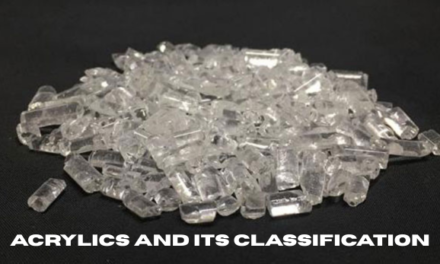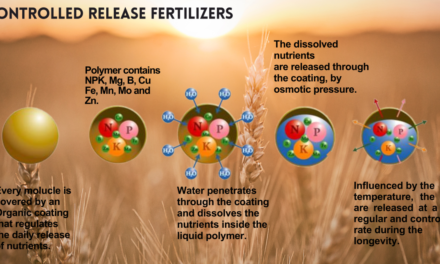The regulation of consumer chemicals is critical to ensuring their safety for users, the environment, and public health. Regulatory frameworks worldwide set standards for formulation, labeling, packaging, transportation, and disposal of consumer chemical products. These regulations vary by region but generally aim to mitigate risks associated with chemical exposure while ensuring product efficacy.
Key Aspects of Consumer Chemical Regulation
1. Product Safety Standards
- Toxicity and Hazard Assessment:
- All consumer chemicals undergo rigorous testing to evaluate their toxicological, environmental, and physical hazards.
- Examples:
- Acute and chronic toxicity, carcinogenicity, mutagenicity, and reproductive toxicity testing.
- Risk Assessments:
- Evaluate exposure levels under regular use and worst-case scenarios.
- Outcome: Approval or restriction of ingredients based on safety thresholds.
2. Ingredient Restrictions
- Banned and Restricted Substances:
- Regulatory agencies maintain lists of chemicals that are prohibited or restricted in consumer products.
- Examples:
- EU’s REACH restricts substances like phthalates and formaldehyde in personal care products.
- FDA bans triclosan in antibacterial soaps.
- Permissible Limits:
- Set concentration limits for certain chemicals to minimize health and environmental risks.
- Example: Maximum allowable levels of heavy metals in cosmetics.
3. Labeling and Packaging Requirements
- Label Transparency:
- Mandatory inclusion of ingredient lists, hazard warnings, usage instructions, and safety precautions.
- Examples:
- The INCI (International Nomenclature of Cosmetic Ingredients) for personal care products.
- Hazard Communication:
- Labels must comply with standards like the Globally Harmonized System (GHS) for classification and labeling.
- Key Information:
- Signal words (e.g., Warning, Danger), hazard pictograms, and precautionary statements.
- Child-Resistant Packaging:
- Products containing hazardous chemicals require child-resistant caps and tamper-evident seals.
4. Environmental Regulations
- Volatile Organic Compounds (VOC) Limits:
- Restrict VOC emissions in products like paints, adhesives, and cleaners to reduce air pollution.
- Examples:
- California Air Resources Board (CARB) VOC standards.
- Biodegradability and Eco-Toxicity:
- Assessment of environmental degradation and toxicity for aquatic life.
- Example: EU regulations for detergents mandate biodegradability of surfactants.
5. Testing and Certification
- Pre-Market Testing:
- Comprehensive testing of formulations to meet safety and performance standards before market release.
- Third-Party Certifications:
- Voluntary eco-labels and certifications enhance consumer confidence.
- Examples:
- EPA’s Safer Choice, EU Ecolabel, and Leaping Bunny for cruelty-free products.
Major Regulatory Frameworks by Region
1. United States
- FDA (Food and Drug Administration):
- Oversees safety and labeling of cosmetics, personal care products, and food additives.
- EPA (Environmental Protection Agency):
- Regulates pesticides, disinfectants, and chemicals under the Toxic Substances Control Act (TSCA).
- CPSC (Consumer Product Safety Commission):
- Manages safety of household chemicals and enforces child-resistant packaging standards.
2. European Union
- REACH (Registration, Evaluation, Authorization, and Restriction of Chemicals):
- Ensures safe use of chemicals by evaluating and restricting hazardous substances.
- CLP (Classification, Labeling, and Packaging Regulation):
- Aligns labeling with the GHS for consumer and industrial chemicals.
- Cosmetics Regulation (EC No. 1223/2009):
- Establishes safety standards for cosmetics and personal care products.
3. Asia-Pacific
- China’s CSAR (Cosmetics Supervision and Administration Regulation):
- Comprehensive framework for cosmetic safety and ingredient approval.
- Japan’s Chemical Substances Control Law:
- Regulates the production and import of chemical substances.
- India’s BIS Standards:
- Bureau of Indian Standards prescribes labeling and safety requirements for consumer chemicals.
4. Other Regions
- Canada:
- The Canadian Environmental Protection Act (CEPA) regulates hazardous substances and environmental safety.
- Australia:
- NICNAS (National Industrial Chemicals Notification and Assessment Scheme) regulates chemical safety.
6. Emerging Trends in Regulation
- Sustainability and Green Chemistry:
- Encouraging the use of renewable, biodegradable, and low-toxicity ingredients.
- Example: EU’s Green Deal promotes sustainable products and processes.
- Ban on Animal Testing:
- Increasing bans on animal testing for cosmetics, prompting the adoption of alternative methods.
- Examples: EU, India, and Australia have implemented bans on animal testing.
- Digital Labeling:
- QR codes and digital platforms provide detailed product safety and ingredient information.
7. Compliance and Penalties
- Compliance Monitoring:
- Regulatory bodies conduct audits, inspections, and product testing to ensure adherence to safety standards.
- Penalties for Non-Compliance:
- Product recalls, fines, or bans for products that fail to meet regulatory requirements.
- Example: CPSC mandates recalls for mislabeled or unsafe household chemicals.
8. Challenges in Consumer Chemical Regulation
- Global Variability:
- Divergent regulatory standards across regions complicate compliance for global manufacturers.
- Evolving Standards:
- Continuous updates to chemical safety lists and emerging concerns (e.g., microplastics, endocrine disruptors) require constant adaptation.
- Ingredient Transparency:
- Balancing intellectual property protection with consumer demand for transparency.
Conclusion
Consumer chemical regulation ensures product safety, environmental protection, and public health. By adhering to stringent global frameworks, manufacturers can produce safe, effective, and compliant products. As consumer awareness and sustainability goals evolve, regulatory frameworks are likely to become even more comprehensive, pushing the specialty chemicals industry toward safer and greener innovations.
Hashtags
#ChemicalRegulations #ConsumerSafety #SafeChemicals #RegulatedChemicals #ChemicalCompliance #SafetyandRiskManagement #ProductSafety #SafeForConsumers #ChemicalRiskAssessment #HazardousChemicalsControl #SafeHouseholdProducts #EnvironmentalandHealthCompliance #EcoSafeChemicals #SustainableCompliance #HealthFirstChemicals #NonToxicChemicals #GreenChemicalRegulations #IndustryStandardsandGuidelines #IndustryCompliance #ChemicalSafetyStandards #CertifiedSafeProducts #GlobalChemicalStandards #ResponsibleChemistry #PolicyandAdvocacy #ChemicalSafetyPolicy #GlobalChemicalRegulations #RegulatoryCompliance #ESGInChemicals #PolicyForSafety

















